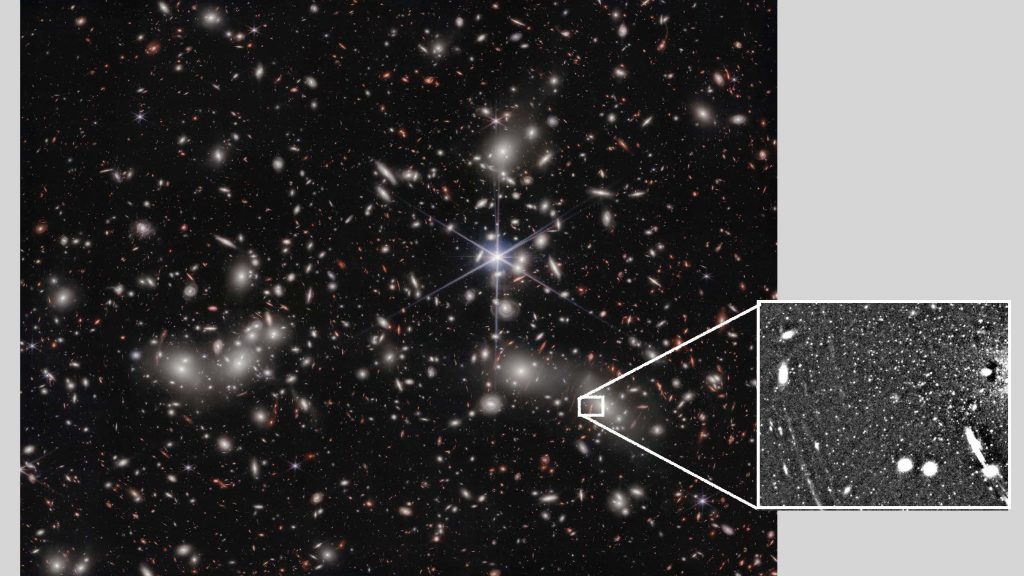McMaster And CITA astronomers use James Webb Space Telescope to probe cosmic history

Recent deep imaging data from the James Webb Space Telescope (JWST) shows a spectacular panoramic view of the Pandora Cluster, a remote, giant cluster of galaxies located 3.5 billion years ago. Marta Reina-Campos, who did this work while a CITA National Fellow based at McMaster, and William Harris, a McMaster emeritus professor, combined forces to analyse the exceptionally deep space images and identify compact groups of stars scattered around the cluster. The results of this work have just been published in the Monthly Notices of the Royal Astronomical Society.
The galaxy cluster, which is also often referred to by its catalog name of Abell 2744, contains a population of thousands of galaxies of all sizes. Reina-Campos and Harris focused their work specifically on the old, compact clusters of stars called globular clusters that are found in those galaxies. Reina-Campos, a theoretician, builds advanced computer simulations of galaxies in which the evolution of their globular clusters can be followed from the early Universe to the present day. Harris is an observational astronomer who works on measuring the real-world properties of globular clusters in large galaxies like those in Abell 2744.
“Up until now, we have been restricted to measuring the properties of these star clusters only in galaxies in the nearby Universe” says Harris. “This is like trying to deduce a person’s history by looking at a present-day photo of them. What about the rest of their life story?” The JWST has opened a huge new range of space and time for exploration.
Abell 2744 is so distant that the light we see now was emitted from it 3.5 billion years ago — about the time that life first originated on Earth. As Reina-Campos says, “For the first time, we can see directly what the features of the star clusters were like billions of years ago. This lets us fill in more of the details of their past, and we can compare them against what used to be theoretical predictions. It also allows us to better understand the histories of the galaxies themselves.”
The so-called “lookback time” for Abell 2744 corresponds to seeing things as they were a quarter of the way back to the Big Bang — i.e., the very beginning of the Universe.
The researchers view their work as the first stage in a new direction. “The images that JWST is producing are incredible — we’ve never seen anything like this before. It’s going to be one of the premier instruments in the entire history of science.”, Harris says.
“This work underscores the importance of theorists working together with observers in order to make discoveries”, said Juna Kollmeier, Director of the Canadian Institute for Theoretical Astrophysics. “It also highlights our fabulous CITA National Fellowship program which brings the best and brightest talent in the world to institutions across Canada. It’s so exciting to see the results of these collaborative efforts!”
Figure Caption: James Webb Space Telescope image of Abell 2744 (“Pandora’s Cluster”), a giant cluster of galaxies 3.5 billion light years away.
Inset image at right: A magnified portion of the region, showing hundreds of small, pointlike objects that are some of the globular star clusters belonging to the Abell 2744 galaxies.
Story also published by Arts and Science News at the University of Toronto.